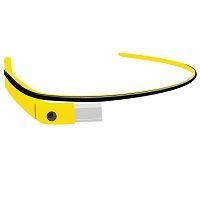Article
Smart Glass Technology Improves Patient Communication and Practice Efficiency
Author(s):
Smart-glass technology, such as Google Glass, may not have taken off in the consumer market yet. But a tech company is making inroads leveraging the technology in physicians' offices.

It was 2012 when Google Glass, a wearable technology with an optical head-mounted display, burst onto the scene. Time Magazine called it one of the best inventions of the year. Even The Simpsons devoted a show to Google Glass.
And then the glass broke.
In January 2015, Google announced that it was suspending, and possibly ending, sales of Google Glass. The company was also especially vague about how many units had actually been sold.
But don’t put the lid on the coffin just yet. Google Glass might just be making a comeback within the healthcare industry. With the help of Augmedix, a San Francisco-based smart glass-powered service, physicians are using the technology to increase productivity and improve patient communication.
Working Wonders
James Ringler, MD, is an orthopedic surgeon in Grand Rapids, MI. He says that using the smart glasses has worked wonders for him and his practice.
“The bane of my existence since I started practicing has been dictating,” Ringler says. “[Google Glass] has been a way I could streamline the process of seeing patients and generating the encounter with that patient.”
Augmedix pairs physicians with Google Glass and a team of trained health consultants to automatically document patient visits and ease the hassles of working with EHRs. Forms, health history, lab orders, prescriptions, and more are easily recorded using verbal notes and commands, and Augmedix does the charting.
Ringler says the technology has enabled he and his practice staff to be more efficient, more effective, and more accurate.
“I think we provide better quality care to the patients, honestly,” he says. “We all know that, especially when you’re giving out difficult advice or you’re talking about a complication, patients hear some of it but not all of it. And it’s not unusual for patients to call back a day or two later to have some clarification as to what we talked about. Now my office staff has immediate access to this.”
Face-to-Face Interaction
Tyler Smith, MD, an orthopedic surgeon based in Roseville, CA, has had a similar experience. He explains that patient visits are now much more focused on the conversation and interaction between him and the patient. He’s also able to save about two hours each day to see patients that had otherwise been reserved for paperwork.
“Time allotted to each patient on my schedule is actually spent with the patient because the prep work going into the room is minimized,” Smith says. “The visit itself is more thorough and complete. I’m not distracted other than listening to the patient, because I know it’s being documented and recorded accurately by somebody else.”
Patient reaction has also been positive. Ringler says that in the five months he’s been using the smart glasses he’s only had one patient who indicated he was uncomfortable with it.
“Most of them are quite interested that we’re leveraging technology to help us in the office in this way,” Ringler says. “I’m in the Midwest, and Grand Rapids probably isn’t the tech center of the world. So our younger patients can’t believe somebody is actually using Google Glass. They think it’s awesome.”
Smith echoes those thoughts.
“I was worried most about how the glass unit would affect patients’ ability to open up during the exam, but I’ve found that to be literally a zero factor.”
Financial Benefits
Augmedix indicates that using the smart glasses has increased physician productivity on average by 30%, while reducing the number of hours each week spent on record keeping from 17 down to two or less. Both Ringler and Smith agree those numbers are accurate.
“I can now be much more efficient in the office with patients,” Ringler says. “I can clearly see more patients with less stress than I did before I was using this, without a doubt.”
Smith says he’s seeing about 20% more patients each day, and subsequently each month, than had previously. And the time that he used to spend charting, if he’s not using it now to see additional patients, he’s putting to good use.
“I’m working on my practice, not just in it,” he explains. “Some systems and workflow elements have gotten more attention and have subsequently been refined because I’ve got more time and energy for that.”
Ringler adds that, in his estimation, using the smart glasses “clearly improves the practice’s bottom line. And even if it didn’t, my quality of life and quality of care I can provide to patients is better. So I think it’s a win-win.”




